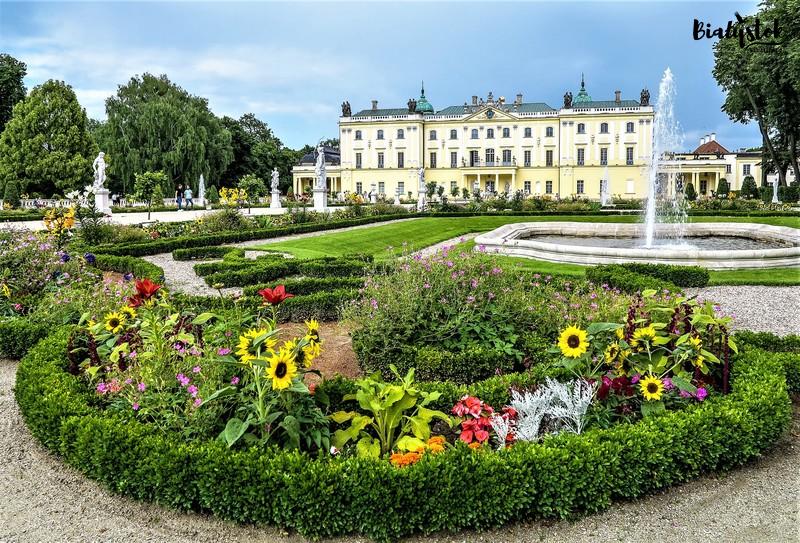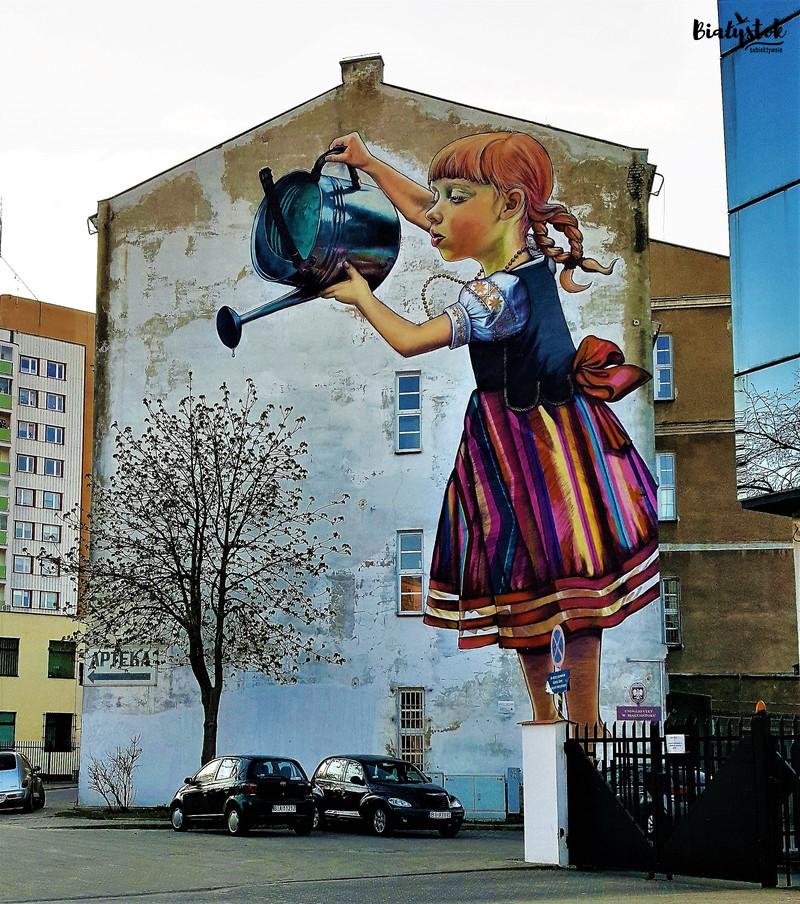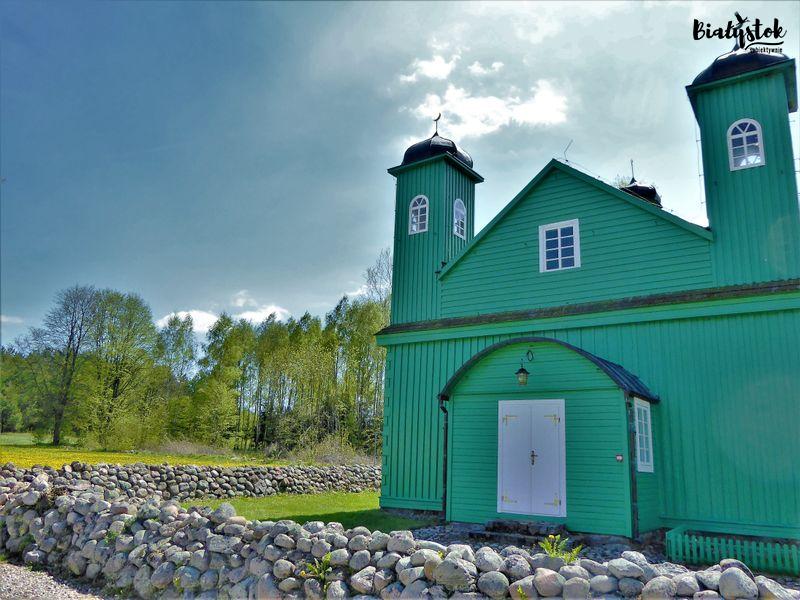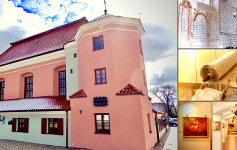This post is also available in: polski
Interesting sites in Podlasie are within the reach of every tourist and there are quite a few of them! Another long weekend is coming… The dilemma of visitors is what to choose and where to go to see the crème de la crème of Podlasie? From now on you will not have any questions or doubts. Here is a proposal of an experienced tour guide. We assume that you will come to us for a few days, catch the bug and next time you will expand the exploration of the whole province: for example, the wonderful southern Podlasie, the unusual Suwałki Region or the little-known but rich Łomża Land. We also assume that your accommodation is located somewhere near Białystok, Tykocin or Supraśl. Of course, every day should include a slow tasting of the local cuisine and a peaceful exploration of selected attractions. We are opposed to jumping from flower to flower just to “check off” – your whole life is ahead of you! Come back to us for more flavors… after all, Podlasie is not far away Egypt. We suggest that your stay in addition to sightseeing include peace, contact with nature and the transition to “slow” mode.
The plan contains links to deepen the knowledge and regional food which is worth tasting in a given place :). We highly recommend our text about classic Podlaskie cuisine – HERE. Drinks worthy of sin – HERE.
THE PLAN OF YOUR STAY.
HOW TO MANAGE FOUR DAYS IN THE PODLASIE REGION
Day 1. Białystok and Tykocin
Białystok is an excellent starting point for exploring the region and at the same time an ideal place for a weekend with children or a romantic Valentine’s Day stay. The city is worth visiting at least once with a proven guide. A three-hour walk will surely not be a strain on your pocket, but it will make you look at the capital of Podlasie differently. Bialystok genuinely delights visitors. This is the essence of these lands. Ludwik Zamenhof was born here and, influenced by the atmosphere of the Tower of Babel, created the international language Esperanto. The Branicki Palace with its baroque garden is an infinite source of stories, anecdotes and curiosities related to the turbulent history of Białystok, known in the entire 18th century Europe as the Versailles of the North. Charming Planty and Zwierzyniec Reserve – a green sea in the very center of the city, with a mini zoo where you can see not only classic forest animals but also unique bison and wolves… St. Nicholas Church – 19th century Orthodox Cathedral – usually open to visitors. Here, too, the guide will have a lot to tell.
Bialystok is not only a palace and gardens…
Finally, the vibrant city center: Kosciuszko Square with its town hall and the Catholic cathedral, and Lipowa Street, which is crowned by an authentic pearl of European modernism, the Church of St. Roch. The capital of Podlasie region also offers a deeper sightseeing program. Marked tourist trails have been laid down in the urban space – we can discover Jewish, industrial, multicultural, wooden Bialystok. Museums and meeting places with art await us. The Bialystok Arsenal Gallery presenting contemporary art is one of the most prestigious places of its kind in the country. For street-art fans Bialystok is also a real challenge – in the urban space you can find several dozen murals, including the world-famous “Girl with a Watering can”. An interactive map of Białystok murals – HERE.
Tykocin. A Baroque pearl and a Jewish shtetl
Agnieszka Osiecka once called Tykocin a town a fairy tale and not without a reason. Wonderfully situated on the Narew River, almost unspoiled by civilization, it continues to inspire and delight. There is probably no such year that the cobbled streets of Tykocin do not turn into a film set. From domestic productions to Hollywood productions, the spirit of the Jewish shtetl soars over Tykocin creating a unique pre-war atmosphere. Miraculously, a unique synagogue and Jewish district have been preserved here. In the former Christian part we admire the Baroque layout of the trapezoidal market square with a beautiful church of the Holy Trinity. Finally, the rich history of the great love of Zygmunt August and the most important fortress of the sixteenth century Poland, which recently raised from the ruins pleases the eye of tourists. The history of Tykocin surprises the most experienced experts in history and the fabulous locations on the Narwia River inspire photographers, artists and naturalists.
Interesting sites in Podlasie
Day 2 Knyszyn Primeval Forest: Supraśl and Kruszyniany
There are only two resorts in Podlaskie Voivodeship. One of them is tiny Supraśl. It is also a great address for…digital detox! This peaceful town lies in the middle of the Knyszyn Primeval Forest, but only a dozen or so kilometers from the borders of the capital of the region – Bialystok. Supraśl has its faithful fans all over Poland. No wonder, though – you can relax here, take peat treatments in spa hotels, savor delicious food and at the same time immerse yourself… in the spirituality of the Orthodox Church and the atmosphere of an industrial settlement from the nineteenth century.
Inconspicuous architecture with great history
The architecture of the town, although marked by wars, is worth seeing. The Orthodox monastery in Supraśl, founded at the end of the 15th century on the border between the Crown and Lithuania, was the intellectual and spiritual center of this land for hundreds of years. The houses of weavers from the 1830s are real gems of wooden architecture. Finally, the cult Icon Museum with its unique atmosphere and a huge amount of knowledge about the Orthodox Church. And yet it is only the beginning of the story about Supraśl and its neighborhood. What to do in Supraśl – detailed information – HERE.
The Tatar Trail. Kruszyniany
The Tatars or Podlasie Muslims are a unique ethnic minority, inscribed in Polish history for centuries. Today they mainly live in Białystok but their ancestral nests are villages near Sokółka and Krynki. This is where tourists come to visit and there invariably since 1679 Tartars have been storing their Asian traditions. The past and present, cuisine, culture and religion – each aspect of the Tatar life is colorful and multithreaded. See for yourself how they live: visit the mosque and mizar (cemetery) in Kruszyniany. You will personally meet the descendants of the Golden Horde there. You will listen to stories about religious practices, tradition and annual holidays. If you have enough time, visit the second mosque in Bohoniki. More information about the beautiful Knyszyn Primeval Forest – HERE.
What to eat in Supraśl and Kruszyniany?
You cannot miss tasting kołduny (special meat dumplings in soup or topped with sour cream) and pierekaczewnik (the Tatar pie) in Tatarska Jurta restaurant in Kruszyniany or Tatarynka restaurant in Supraśl! Your kids will enjoy sweet manti (dumplings with sweet filling). Actually, each Tatar food is worth tasting!
Interesting sites in Podlasie
Day 3: Land of Open Shutters and Białowieża
Three villages, Soce, Puchły and Trześcianka, have been somewhat artificially included in the common, charming name of the Land of Open Shutters. Let us not limit ourselves only to this imposed framework. Being in the area, let’s necessarily pay a visit to Ciełuszki, Pawłów, Kaniuk, Ryboł, Plosek…the list could go on and on. Each of these places is inhabited by an indigenous population of Podlasie (Podlaskie native people!), mostly Orthodox and identifying with the Belarusian minority. Normally the inhabitants use the disappearing dialect of Podlasie. Soce is a village with an unusual two-street layout, in Puchły you will find a blue church of the Care of the Mother of God, called the most beautiful wooden church of Podlasie.
Cottages like in a Russian fairy tale…
However, the Land of Open Shutters became famous mainly for decorating wooden cottages. Colorful shutters, richly decorated gables and corners of gabled cottages, porches and neatly maintained homesteads imitate the spatial arrangement from the time of Queen Bona. All this is immersed in silence and green gardens with malvas, asters and peonies. Perhaps you will be able to make contact with the elderly women wearing headscarves and sitting on wooden benches? The best thing you can do is to plan a summer bicycle trip through the wilderness of the Land of Open Shutters.
Białowieża Forest
Białowieża Forest is a place that every Pole should visit. The priceless heritage of the primeval forest was appreciated by Polish kings several hundred years ago when they established their own private tableware here. In the 19th century it was protected by tsars. It is in the Białowieża National Park that the European bison was saved from extinction (which we wrote about HERE). In 1979 the Białowieża Forest was included in the UNESCO World Heritage List. It is like an Oscar, the highest possible distinction, no other Polish natural object has ever received this honor. We encourage you to visit the most precious thing – the strict nature reserve.
A visit to the nature reserve is a metaphysical experience….
The essence of the Białowieża Primeval Forest and the heart of the Białowieża National Park. A place where time has stopped… We enter the primeval forest – here natural processes have been taking place continuously for hundreds of thousands of years. We are surrounded by silence, we feel the greatness and wisdom of nature. We see trees that die, thus providing a home and refuge for hundreds of other species. Here, human intervention is kept to a minimum. Entering a nature reserve is both a sightseeing and a metaphysical experience. We strongly recommend visiting this place in the spring, in the early hours of the morning. A person with minimum sensitivity will remember these moments until the end of their life. Please keep in mind that the sightseeing tour is possible only with a certified guide of the Białowieża National Park in groups not exceeding 12 people. Other suggestions for spending time in Białowieża and its surroundings: HERE.

What to eat in the Land of Open Shutters and Białowieża?
It is an absolute must to taste a masterly cake called Marcinek Hajnowski and moonshine. Marcinek is not a problem whatsoever, but moonshine… – well, seek and you will find! Nevertheless, if you do not succeed, you must taste and drink spruce flavored local craft beer, it is called Kornik (woodworm)!
Interesting sites in Podlasie
Day 4. Nature – on bike, kayak, on foot… in a balloon?
Certainly we could spend the next day traveling by car through more and more villages and towns, national parks and landscapes… But we offer you an activity that will allow you to experience the famous magic of Podlasie: silence, murmur of the forest, symbiosis of man and nature. Go cycling (an ideal route for the whole family is 36 km in the wilderness of the Land of Open Shutters) and canoeing – we recommend rafting on the Narew, Narewka and Supraśl. If you do not want to mess with booking and transporting equipment, we recommend visiting the Chomontowszczyzna Reserve or the Krzemianka Reserve. A few kilometers of walking – and the satisfaction is truly extraordinary! If you are not that energetic, though, a kilometer-long footbridge through marshes and floodplains connecting the villages of Śliwno and Waniewo in the Podlasie Amazonia, i.e. the Narew National Park is an option for you. Balloon flights over Podlaskie rivers will also give you an extraordinary experience!
Active recreation in Podlasie has been described in detail HERE.
Interesting sites in Podlasie. Hints…
- We recommend a guided tour with local guides! Call us on 504 868 400
- To avoid disappointment, book entries to museums and popular restaurants. Long weekends in Podlasie have become fashionable, sometimes crowded!
























Leave a Reply